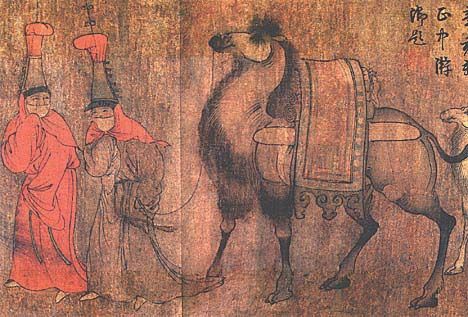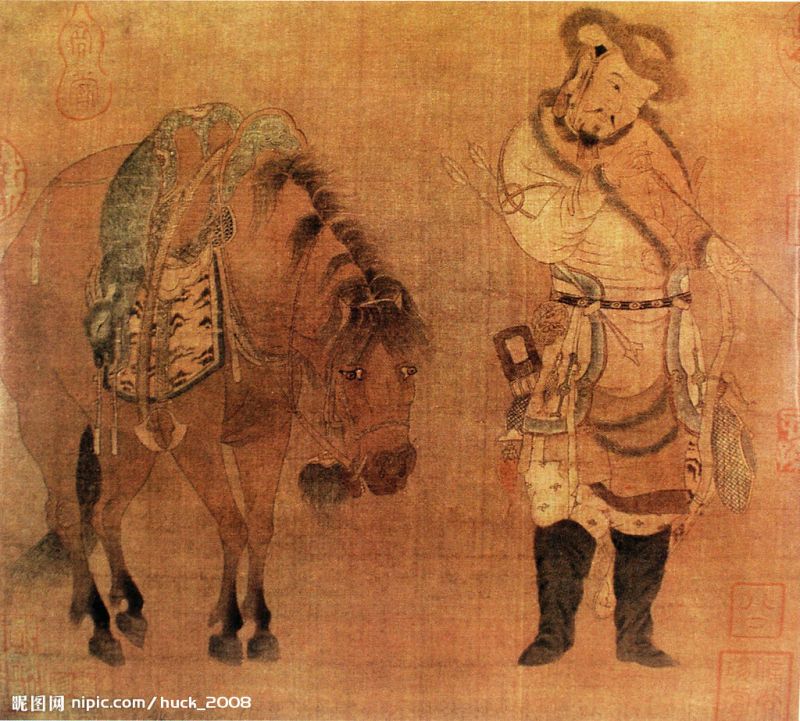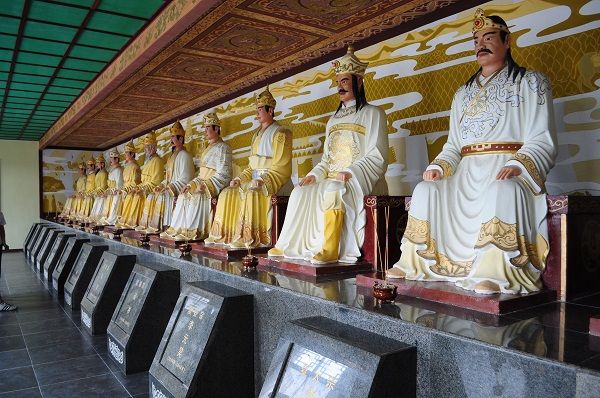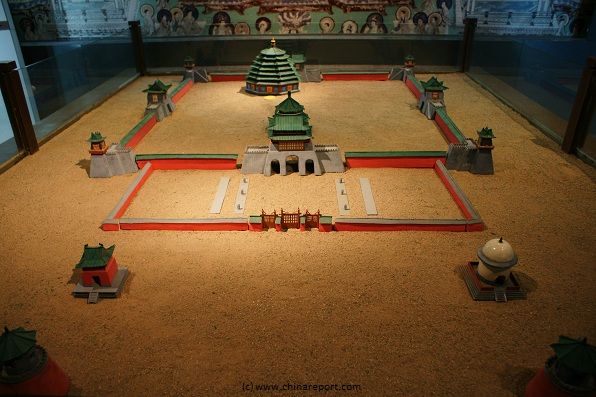STEPPE
Jami Tawarikh
Finding illuminated manuscript art for the Steppe culture has been difficult so as a work around I've been using sources from a Timurid version of a Jami Tawarikh book written in 1430. Originally the jami Tawarikh was used to justify mongol hegemony over Iran and was composed by Rashid-al-Din Hamadani.
The original book is often described as "the first world history" and is used to describe cultures and major events in world history from China to Europe (mainly the history of Genghis Khan I think.)
Eighteen songs of a nomad flute
Again with actual steppe sources being of short supply I've had to look into different sources which are descriptive of the mongol nomad lifestyle which led me to the sublime eighteen songs of a nomad flute.
The work is a poetic story of lady Wen-Chi's abduction into the nomad steppe from her hometown of Ch'en-liu. These images are all from an original 14th Century handscroll book which have been remastered possibly in the 17th or 18th Century but I'm uncertain. (That just means colored in)
GREEK
The alexander romance
Originally commissioned by the emperor Alexios III this manuscript was created in the 14th century possibly in trebizond by either georgian or lazi illuminators. The book was created by two different writers but does have ottoman text inscribed on some of the illuminations and is now housed in venice.
Skylitzes chronicle
Skylitzes chronicle or the Madrid skylitzes as it's more commonly known was composed in sicily and covers the reigns of the byzantine emperors from 811-1057. This work is the only surviving illuminated manuscript of a greek chronicle from the time period of dots.
The only problem with this manuscript is that the illuminations generally degrade as we progress through the book, this may be down to ill health but as there are over 500 illuminations in the book I like to think that he thought pictures were a good idea to begin with but couldn't be arsed come the end.
Early
Late
Menologion of Basil II
This book was created in the 11th century. A menologion is a certain type of book produced in the byzantine world that told the story of saint's lives in chronological order. Often, as in the case of this book they were heavily illuminated.
Armenian illuminations
I was surprised to find that there is actually a lot of sources for Armenian manuscript art as it seems there was actually a law against destroying all forms of Armenian art through the ages. The only problem though is that a vast majority of it is created in the forms of gospels which makes the images anti descriptive for buildings constructed.
Georgian illuminators
I had struggled with georgian art (the info on the alexander romance was new to me) so I had been using a 17th century georgian artist called Mamuka Tavalkalashvili. The art comes from a book called The knight in a panthers skin which was commissioned by Levan II Dadiani, Prince of Mingrelia.
MIDDLE EAST
Seljuk
Maqamat
The Maqamat is a series of short poems centred around a silver tongued travelling trickster. The original poems were created in the 10th century by hamadhani with illuminations being added in the 13th century.
The maqamat is not only a seljuk book as I also have a syrian version of the book also from within the Dots timescale.
Seljuk
Syrian
Agayib nama
I've not been able to gather much information on this manuscript book other than it's persian and it's dated 1388 and it's pretty much the only source of Zoroastrianism art I can find.
Shahnama
Also referred to as the shahnameh this is a classical persian poem originally written around 1000 AD by the poet Ferdowsi. Originally created as a historical account of the rise of Persia much of the poetry is mythical.
Numerous illuminated books have been created around the shahnama and again I've used both Persian and Syrian versions.
Seljuk
Egypt
Kalila et dimna
The kalila et dimna is another book which transcends different regions of the middle eastern world as I also have a persian version. The main versions of these books tend to be centred around animals although these copies seem to have humans as the central characters. Dated between 1201-1300 AD
Egypt
Kitab al mawalid
The kitab al mawalid represents illuminations of the Zodiac and phases of the moon personnified. The early illustrations of this book mark the earliest forms of satan and demons (not that I was looking) that I've seen, dated to around 1300.
Almovarids
I've found little evidence of Almovarids in actual art so I've used Moors as depicted in the Cantigas de Santa Maria (rico codex) which is a spanish illuminated manuscript book. Commissioned by Alfonso X El sabio the cantigas is primarily a source of gallician poetry and music but is richly decorated with gothic style illuminations.
EASTERN EUROPEAN
Radziwill Chronicle
The radzwill or primary chronicle is a historical account of the kievan rus from 850-1110. Although the original manuscript is now long lost I've used a version which may have been created sometime in the 15th Century. The manuscript also seems to have had someone adding poor but slight alterations to it over time.
CENTRAL EUROPEAN
Codex manesse
Again this codex is primarily a work of poetry which has also been illuminated. Created in Zurich for the Manesse family in the 14th Century the manuscript starts by depicting the poems of Emperors followed by kings and dukes before eventually depicting the common people.
Chronicon Pictum
Created in Hungary in the 14th Century the chronicon pictum provides knowledge of Hungarian life, historical traditions and legends with even Attila the hun making an appearance although his images have been disrupted. The pictum has probably the most detailed illuminations from the time period as even the eyeballs of the people depicted have been hand painted.
Sachsenspeigel
The great German law code which covers both feudal and common law. Although it was originally written in 1220 it was still in use as a law code in Germany till as recently as the 1900s.
NORTHERN EUROPEAN
Les Grandes chroniques de france
There are actually three volumes written over a period of 25 years with all three being richly decorated illuminated manuscript books. It's possible that these three books may have be written in competition with each other as I think they were all commissioned by differing Dukes.
Luttrell psalter
In the 14th Century Sir Geoffrey Luttrell could feel his death coming and so commissioned this manuscript as an account of his personal actions. The book is richly decorated with accounts of gospels, deeds and examples of everyday life in medieval England.
SOUTHERN EUROPEAN
The Decameron
Created by the Aragonese king of Naples between 1401-1500.
(all the info I've got and possibly only the date is correct)
The Beatus of Facundus
In the the 8th century, in a monastery in the mountains of northern Spain, 700 years after the Book of Revelations was written, a monk named Beatus set down to illustrate a collection of writings he had compiled about this most vivid and apocalyptic of the New Testament books. Throughout the next few centuries his depictions of multi-headed beasts, decapitated sinners, and trumpet blowing angels, would be copied over and over again in various versions of the manuscript. Below is a selection of images from one such manuscript known as the Beatus de Facundus (or Beatus de León), dating to 1047 and painted by a man called Facundus for Ferdinand I and Queen Sancha.

































 Reply With Quote
Reply With Quote

























